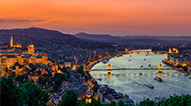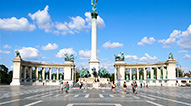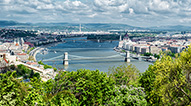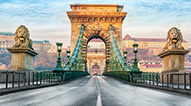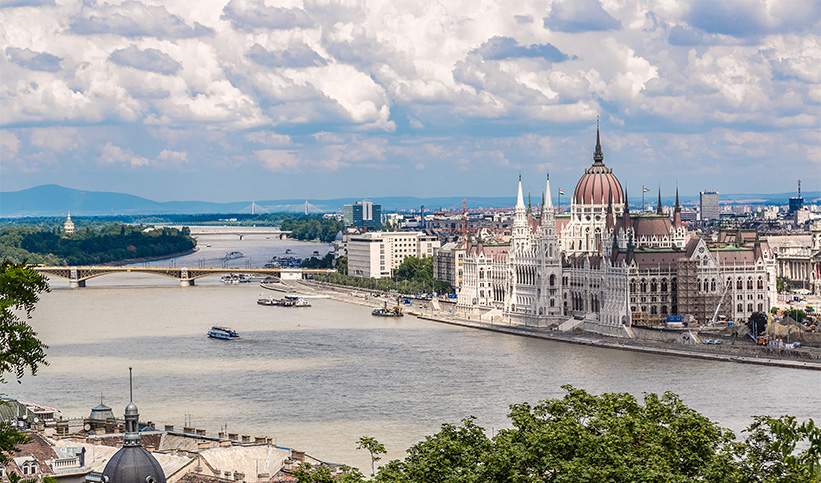
Suggested readings
Useful links 
www.kormany.hu/en/hungary
Website of the Hungarian Government about Hungary
www.utcakereso.hu
online map (in Hungarian, English and German)
www.webmap.hu/bp
online map (in Hungarian, English and German)
www.bkv.hu
public transport in Budapest (in Hungarian and English)
www.absolutetours.com
everything you want to know about budapest as a tourist (in English: sites, walks, clubs, etc…)
www.guideathand.com/en/index
An audio tourist guide application available on smart phones
www.gotohungary.net
Programs in Budapest
Hungary
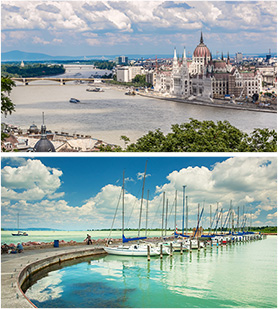 This country is one of the oldest European countries, situated in the middle of the continent in Central Europe. Hungarians speak a language “magyar” and form a culture unlike any other in the region: this distinctiveness has been both a source of pride and a challenge for more than 1100 years. This is the country – which boasts one of the world’s most beautiful cities: Budapest, the “Pearl of the Danube” – where 2000 year old Roman ruins and 400 year old Turkish monuments can be found side by side with 600 old castles – where Central Europe’s largest fresh water lake – Balaton – is located, providing natural paradise for its visitors – where the largest number (thousands of) therapeutic mineral springs gush up from the depths in Europe. And there is something else that keeps bringing visitors back to us – the legendary Hungarian hospitality.
This country is one of the oldest European countries, situated in the middle of the continent in Central Europe. Hungarians speak a language “magyar” and form a culture unlike any other in the region: this distinctiveness has been both a source of pride and a challenge for more than 1100 years. This is the country – which boasts one of the world’s most beautiful cities: Budapest, the “Pearl of the Danube” – where 2000 year old Roman ruins and 400 year old Turkish monuments can be found side by side with 600 old castles – where Central Europe’s largest fresh water lake – Balaton – is located, providing natural paradise for its visitors – where the largest number (thousands of) therapeutic mineral springs gush up from the depths in Europe. And there is something else that keeps bringing visitors back to us – the legendary Hungarian hospitality.
They are actually “Magyar” not “Hungarian”
“Hungarian” is a foreign English term. The original Hungarian word for “Hungarian” is “magyar“. The country’s Hungarian name is therefore Magyarország where “ország” (orsaagh) means land and country. Magyarország means “Magyar Country”. “Magyarország” is what you see at the border crossings, airport and in the passport of Hungarians. If you want to connect to the heart of a Hungarian you should know that they are magyar and their country is Magyarország. Another hint is to avoid the joke “are you hungry or Hungarian?” Usually the Hungarians will laugh with you helping you believe that you have coined this joke in the first time in history. As the matter of fact Hungarians have heard this a hundred times from other foreigners and they would never show the subtle hurt they might feel or how tired they are hearing it again. They simply value themselves more then being hungry. Actually the term Hungarian has different explanations. Since they are descendants of the Hun tribes it seems obvious that that’s where the term Hun-garian comes from. Some linguist researchers suggest that it relates to the Turkish On-Ogur. French call them Hongroise, Spanish Hungaro, and German Ungarisch – pronounced all start with “ong or ung”. English call them Hungarians.
A minimal knowledge of history to get along
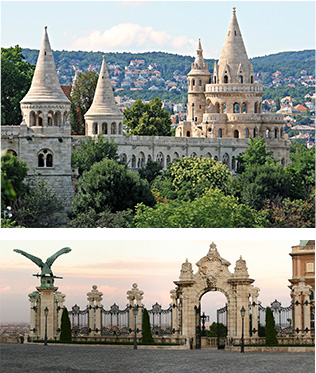
One of their ancestors is Attila the Hun a fierce invader from the fifth century. If you might want to check basic Hungarian history here is a link for a very short summary and here is a little more detailed history. Sometimes people from outside of Europe think that Hungarians are somehow related to Russians or speak Russian or that they are Austrians and speak German. The latter misconception comes from knowing about the Austro Hungarian Monarchy that lasted 50 years(1867-1918) in a history of 1119 years (895-2014). The other misconception comes from knowing that Hungary was part of the ex-socialist Eastern block (1945-1991) for roughly another 50 year. Hungarians respect these times and their neighbors but don’t like to be seen as some other nation or language. They have their unique language, country, mentality and culture for over 1000 years in the Carpathian basin in today’s Hungarian territory.
The Land of Inventors
Hungarians are strong in math, physics, technological inventions, psychology and water polo. Many inventions in the world has came from Hungarians such as the Vitamin C, the color TV, the refrigerator, the electric locomotive, the automated gear in cars, contact lenses, the automatic photo-cameras and the Excel software. Watch this 3-minute clip and, have a tour around the country while at the same time seeing some of the famous inventions and listening a beautiful traditional female singer mixed with world music.
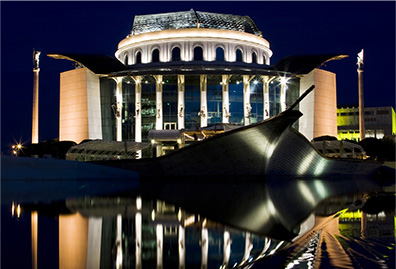
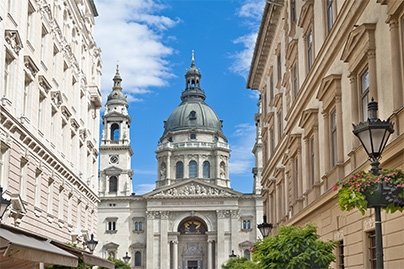
Budapest
Often described as the “Little Paris of Middle Europe“, Budapest is famous not only for the monuments reflecting its own 1,000-year-old culture, but also for the relics of others who settled here. Remains from both Roman occupation and much later ruled by the Turks can still be seen in the city. After the Ottoman Empire the union with Austria has a particular influence on the city’s form and style. The capital has two sides, the hilly Buda and the flat Pest, stretching along the banks of the Danube, representing two different characters of the city. They are connected with 9 bridges of which the oldest and first one was the Chain Bridge (Lánchíd) built in 1849 uniting Buda and Pest into one city and making it the capital of Hungary. The 770 years old Buda Castle that is a UNESCO World Heritage Site and is located in the middle of Budapest. You can’t miss it when you look into a typical Budapest photo.
Suburban Buda and its historic castle district offer medieval streets and houses, museums, caves and Roman ruins. The dynamic Pest side boasts the largest parliament building in Europe, riverside promenades, flea markets, bookstores, antique stores and café houses. Budapest has a lot to offer. Museums and galleries, churches and synagogues, palaces and historic buildings, baths and pools are presented together with the influence of Secession in the city.
Spa, thermal baths
The geological features of the Carpathian Basin are such that the earth’s crust is very thin, so waters rise easily to the surface. Hungary is a land of more than 1,000 hot springs and enough spa facilities to accommodate 300,000 people at the same time.
